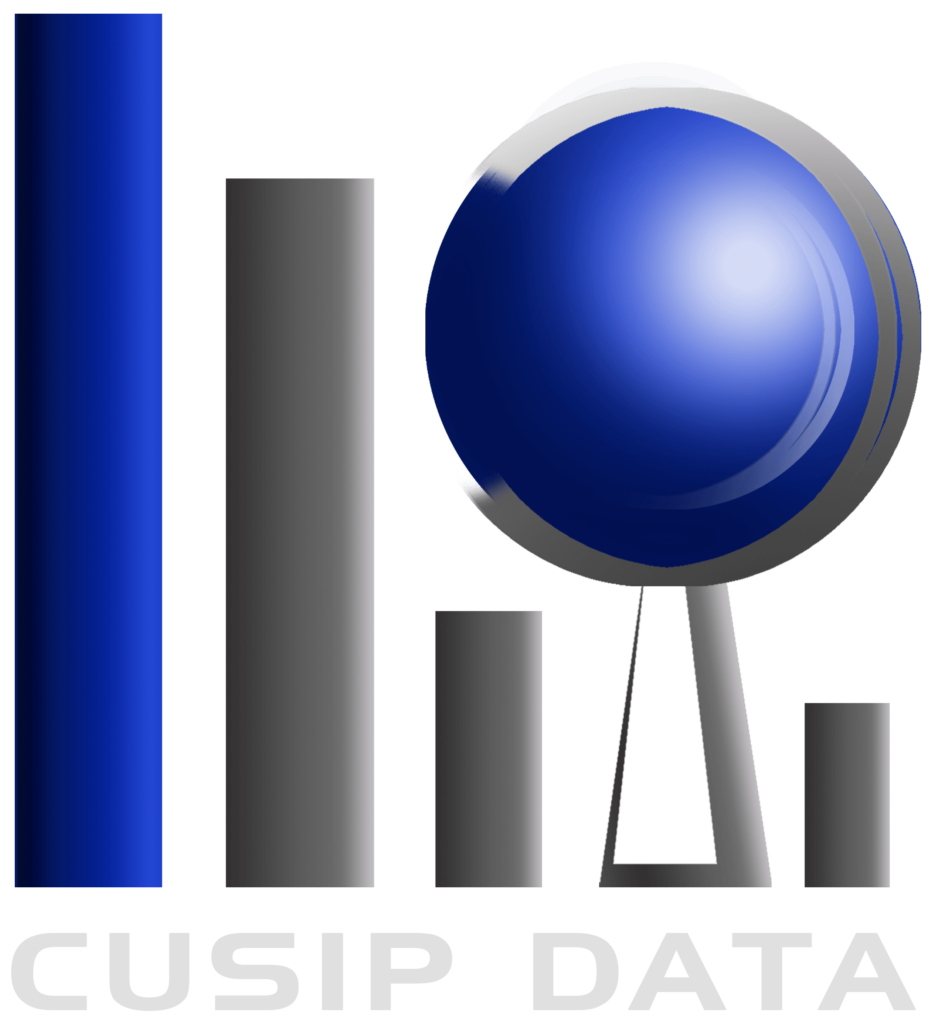- HOME
- About us
- Services
- COVID-19 and CUSIP Codes: Impacts on Mortgage Loan Securities Markets
- The Significance of CUSIP Numbers in Mortgage-Backed Securities Trading
- CUSIP Codes and Consumer Protection in Mortgage Lending
- CUSIP Codes and ESG Factors in Mortgage Loan Investments
- CUSIP Codes and Loan Pools: Maximizing Value in Mortgage Loan Sales
- CUSIP Codes and Mortgage Loan Origination: What Homebuyers Should Ask
- CUSIP Codes and Risk Management in Mortgage Loan Portfolios
- CUSIP vs. Ticker Symbols: Key Differences in Mortgage Loan Securities
- Emerging Trends in CUSIP Use within Mortgage Loan Securities
- How CUSIP Codes Affect Mortgage Loan Transparency for Homebuyers
- How CUSIP Codes Help Investors Navigate Mortgage-Backed Securities
- How CUSIP Numbers Can Help Consumers Understand Mortgage Loan Risks
- How CUSIP Numbers Facilitate Mortgage Loan Due Diligence for Sellers
- Legal and Regulatory Aspects of CUSIP Codes in Mortgage Loan Sales
- Liquidity Enhancement: CUSIP Codes in the Mortgage Loan Sales Process
- Streamlining Mortgage Loan Sales with CUSIP Number Integration
- The Evolution of CUSIP Codes in Mortgage-Backed Securities Markets
- The Future of CUSIP Codes: Innovations in Mortgage Loan Markets
- The Impact of CUSIP Standardization on Mortgage Loan Securities
- The Importance of CUSIP Codes in Selling Mortgage Loans
- The Role of CUSIP Codes in Mortgage Loan Documentation for Borrowers
- The Role of CUSIP Codes in Mortgage Loan Securitization
- The Role of CUSIP Codes in Mortgage-Backed Securities
- Transparency and CUSIP Codes in the Secondary Mortgage Loan Market
- Understanding CUSIP Codes: A Primer for Mortgage Loan Securities
- Using CUSIP Codes to Track and Manage Mortgage Loan Information
- Using CUSIP Data to Evaluate Mortgage Loan Pricing Strategies
- What Consumers Should Know About CUSIP Numbers in Mortgage Loans
- CUSIP & Securitization of Mortgage Loans – A Journey into Financial Clarity
- The Essential Interplay between CUSIP & Securitization of Mortgage Loans
- CUSIP & Securitization of Mortgage Loans – Structuring a Transparent Market Landscape
- The Synchrony of CUSIP & Auto Loan Securitization speeds up Finance
- The alignment of “CUSIP & Securitization of Auto Loans” evolves the realm of finance
- The Synergistic Integration of CUSIP & Auto Loan Securitization
- Analyzing CUSIP and Securitization of Credit Card Loans
- CUSIP Numbers and Asset Allocation Strategies
- The Global Reach of CUSIP Numbers
- How Corporate Actions lead to changes of CUSIP Number
- Protect CUSIP Numbers for Security and Fraud Prevention
- CUSIP Data: Key Insights for Mortgage Loan Investors
- The Role of CUSIP Numbers in Regulatory Compliance
- The Importance of CUSIP Code in Risk Management
- CUSIP and Mortgage Loans: Standardization in a Complex Financial Landscape
- CUSIP Data: Important approach to Mortgage Loan Investors
- Mortgage Loan Investor’s Guide: Essential Insights into CUSIP Data
- CUSIP and Securitization of Credit Card Loans: Navigating the Financial Matrix
- CUSIP Numbers in Mutual Funds and ETFs: A profound search into Fund Identification and Management
- CUSIP & Securitization of Auto Loans: Driving the Financial Future
- A Deep Dive into the Power of CUSIP Data in Risk Management
- The CUSIP Advantage of Navigating the Auto Loan Securitization Maze
- Mortgage-Backed Securities and CUSIP Codes: A Harmonious set of two
- Mastering CUSIP Codes: Tips and Tricks for Financial Professionals
- Fine-Tuning Your Auto Loan Investment Strategy with CUSIP Intelligence
- Blog
- FAQ
- Contact Us
CUSIP vs. Ticker Symbols: Key Differences in Mortgage Loan Securities


In the world of finance, where precision and clarity are paramount, two seemingly simple yet crucial codes often take the spotlight: CUSIP numbers and ticker symbols. When it comes to mortgage loan securities, these codes play distinct but equally significant roles. Understanding the differences between them is essential for investors, analysts, and anyone navigating the complex realm of mortgage-backed securities (MBS).
This article aims to unravel the mystery behind CUSIP numbers and ticker symbols and shed light on how they function within the context of MBS. While both are codes used to identify financial instruments, they serve distinct purposes.
CUSIP numbers, standing for Committee on Uniform Security Identification Procedures, are the backbone of securities tracking and record-keeping. They provide detailed information about the issuer, security type, and terms, offering a comprehensive view of a mortgage loan security’s characteristics.
On the other hand, ticker symbols are concise, easy-to-remember abbreviations used primarily for trading purposes. They’re like shorthand for investors, quickly conveying essential information about a security.
CUSIP Codes: The Industry's Alphanumeric ID
CUSIP, which stands for “Committee on Uniform Security Identification Procedures,” is an alphanumeric code assigned to securities. Think of it as the fingerprint of security, providing a unique identifier for tracking and recording purposes. CUSIP codes are comprehensive and are used across various financial instruments, including mortgage-backed securities (MBS).
Ticker Symbols: The Trading Shortcut
In contrast, ticker symbols are shorter, often alphabetic, and are designed primarily for trading. They are like shorthand for a security’s full name. They are used on stock exchanges to represent a publicly traded security. Ticker symbols are meant to be user-friendly and easily recognizable, making them popular among investors and traders.
Now, let’s explore the key differences between CUSIP codes and ticker symbols in the realm of mortgage loan securities:




Purpose and Function
- CUSIP Codes These codes are not designed for trading. Instead, they focus on identification, record-keeping, and regulatory compliance. They serve the back-office functions, ensuring securities are correctly tracked and documented.
- Ticker Symbols Ticker symbols are all about trading. They’re the quick reference labels used during trading sessions. Investors and traders use them to place orders, check stock prices, and monitor trades in real-time.
Uniqueness
- CUSIP Codes:Each financial security has its own unique CUSIP code, and this code remains unique regardless of where or when the security is traded.
- Ticker Symbols:Ticker symbols might not be unique across different exchanges or even for securities of the same class. For example, a ticker symbol like “AAPL” represents Apple Inc. on the NASDAQ but not on the NYSE.
Standardization
- CUSIP Codes:CUSIP codes adhere to a standardized format. This consistency is crucial for regulatory compliance and risk management across the financial industry.
- Ticker Symbols:Ticker symbols, while standardized to some extent, can vary between stock exchanges and even among securities of the same type. There’s less rigidity in their format.
Access to Information
- CUSIP Codes:These codes open the door to a wealth of information about security, including its issuer, maturity date, and more. They’re a key to unlocking comprehensive data.
- Ticker Symbols:Ticker symbols mainly provide access to real-time trading information, such as current stock prices and trading volumes. They’re your go-to for quick updates during a trading session.
Trading vs. Record-Keeping
- CUSIP Codes:They’re the unsung heroes of record-keeping, used behind the scenes for documentation, risk management, and regulatory compliance.
- Ticker Symbols:Ticker symbols take the spotlight during trading, being front and center for investors and traders as they buy and sell securities.
Use in Mortgage Loan Securities
- CUSIP Codes:CUSIP codes are fundamental in the world of mortgage loan securities. They’re associated with specific mortgage loans and play a critical role throughout the securitization process.
- Ticker Symbols:Ticker symbols aren’t typically used to identify or track mortgage loan securities. They’re more commonly associated with publicly traded stocks and exchange-traded funds (ETFs).


Why Do These Differences Matter in Mortgage Loan Securities?
Understanding the distinctions between CUSIP codes and ticker symbols is crucial, especially in the context of mortgage loan securities. Here’s why it matters:
- Accuracy and Precision CUSIP codes ensure accuracy and precision in tracking mortgage loan securities. They’re indispensable when it comes to keeping records straight.
- Regulatory Compliance Mortgage loan securities are subject to regulations, and CUSIP codes help meet compliance requirements. They provide the standardized identification necessary for regulatory reporting.
- Trading Efficiency Ticker symbols are all about efficiency during trading. Investors can quickly identify, buy, and sell securities without having to remember lengthy codes or security names.
- Transparency While CUSIP codes may seem technical, they contribute to transparency in the financial markets. They help ensure that securities are correctly represented and documented.
- Risk Management CUSIP codes are a key component of risk management in the financial industry. They aid in assessing and managing risks associated with mortgage loan securities.
Conclusion
In the intricate world of mortgage loan securities, the choice between CUSIP codes and ticker symbols is more than a matter of nomenclature; it’s a critical decision that impacts how financial professionals and investors interact with these instruments. Throughout this article, we’ve navigated the key differences between CUSIP codes and ticker symbols, shedding light on their distinct roles in the mortgage loan securities market.
In conclusion, understanding these differences is paramount for anyone involved in this financial realm. While ticker symbols are the familiar shorthand used for trading and tracking securities, CUSIP codes are the comprehensive identifiers that offer deeper insights into mortgage loan securities.
Ticker symbols may be more visible, but CUSIP codes provide a more extensive and standardized framework for accessing essential information about securities. They are the tools that facilitate accurate settlement, compliance, and transparency in the market.
Ultimately, the choice between CUSIP codes and ticker symbols depends on your specific needs and role within the mortgage loan securities ecosystem. Investors may favor the convenience of ticker symbols. At the same time, regulators and financial institutions rely on the precision and depth of CUSIP codes.
